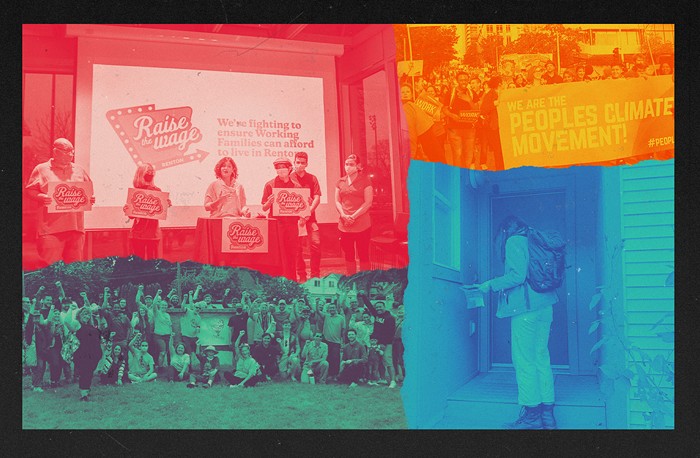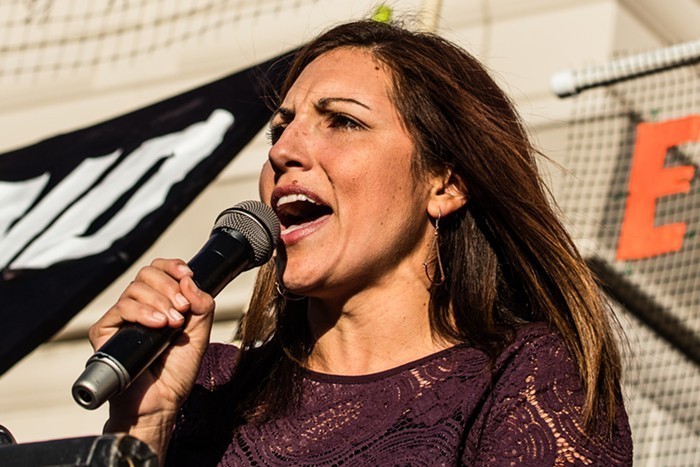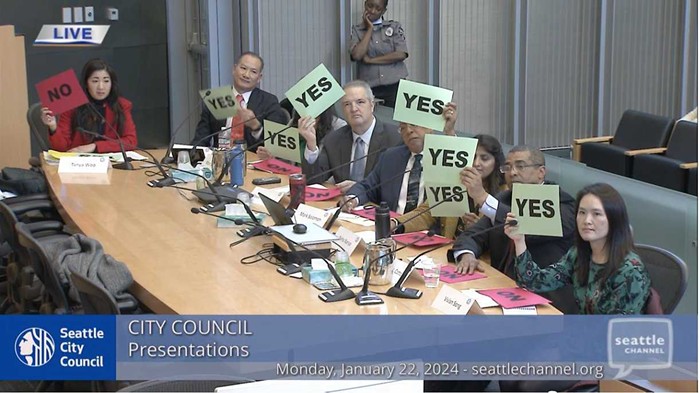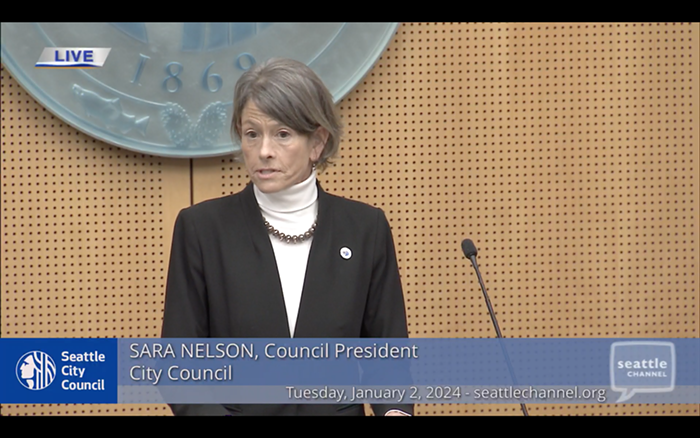
The Seattle Department of Transportation isn't sure if the 36-year-old West Seattle Bridge can be saved, the department informed the Seattle City Council in a presentation on Monday morning.
The high-rise portion of the bridge was shut down suddenly at the end of March because cracks that SDOT had been monitoring for months had grown larger at an unprecedentedly accelerated pace. At the time, officials weren't sure that the bridge could continue to support traffic. They still aren't.
Currently, only the lower portion of the bridge is supporting any form of traffic and that is limited to freight, emergency vehicles, and public transit. West Seattle residents must use alternate routes. The situation is making West Seattle, a peninsula, feel more and more like an island, Councilmember Lisa Herbold said.
Sam Zimbabwe, the director of SDOT, updated the council on the timeline for repairing the bridge. It was announced last week that the bridge won't reopen until 2022 at the earliest. But Zimbabwe made it clear that SDOT does not have an exact plan for these repairs and they could determine that the bridge shouldn't be saved at all.
"We do not yet know if a repair of the bridge is feasible technically or financially," Zimbabwe told the council. "If a repair is feasible that could provide up to 10 years of life for the bridge." But at some point, he said, "we will need to replace the bridge."
Adding 10 years to the 36-year-old span's life means the bridge's maximum life expectancy is now 46 years. It was meant to last for at least 75 years.
For now, the bridge must be secured and stabilized through a process called shoring. By going through that process, which won't be finished until 2021, SDOT will be able to determine which path forward they should take—repair or replacement, Zimbabwe said. Shoring will also protect the public and SDOT crews since there's always a possibility that the bridge could fail (SDOT jargon for "literally collapse").
Here's SDOT's timeline:


This slide full of depressing, unanswered questions is my favorite:

This slide on the last phase of repairs that starts off with how repair may not be possible is my second favorite:

Currently, Zimbabwe said, SDOT is in the beginning of the design process, at approximately "zero percent of design," Zimbabwe said. "This is a very complicated bridge."
For that reason, SDOT will be looking to make a Technical Advisory Panel, which sounds like a sort of Avengers-style coalescence of design and engineering experts to weigh in on how SDOT should go about this whole dilemma.
In the meantime, residents are stuck with using alternate routes to get to and from home.
"Please," Herbold pleaded to any residents who may have been listening to the meeting, "stop using the lower bridge." While police are monitoring the bridge for any non-approved traffic, they aren't there at all times and people are still skirting the rules and using the lower bridge. Which is pretty dumb if you think about it since there is still a possibility that the high-rise bridge, which has cracks that are still growing, could collapse. Council President Lorena Gonzalez added that this was "not a soft suggestion but an absolute order."
Live in West Seattle and want more bridge information? Lisa Herbold will be hosting an electronic town hall for District 1 on Wednesday from 5 to 6:30 p.m. and SDOT will be speaking to the Highland Park Action Coalition at around 7 p.m. on that same day.



















